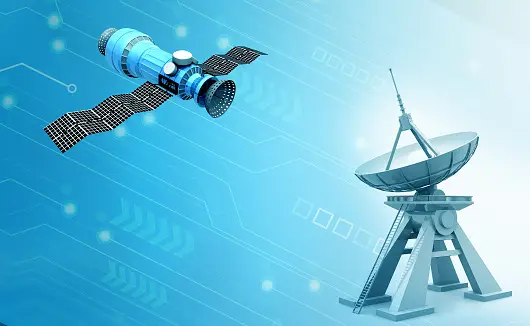Exploring VSAT Providers and Their Impact on Connectivity
In today’s hyper-connected world, reliable and high-speed internet connectivity is no longer a luxury but a necessity. Whether it’s for individuals staying connected with loved ones, businesses conducting transactions globally, or remote communities accessing essential services, the demand for robust internet connectivity is ubiquitous. In this landscape, Very Small Aperture Terminal (VSAT) technology emerges as a vital solution, enabling seamless communication even in remote or challenging terrains. This article delves into the realm of VSAT providers, exploring their significance, key players, and the impact of their services on various sectors.
Understanding VSAT Technology
VSAT technology facilitates satellite communication by transmitting and receiving data through small dish antennas, typically ranging from 0.75 meters to 1.2 meters in diameter. These terminals establish two-way communication with geostationary satellites orbiting the Earth, enabling data transfer across vast distances. VSAT systems are known for their versatility, capable of delivering broadband internet, voice, video conferencing, and other data-intensive applications.
The Significance of VSAT Providers
VSAT providers play a crucial role in bridging the digital divide by extending connectivity to underserved areas where traditional terrestrial infrastructure is unavailable or impractical. Their services are instrumental in:
- Enabling Remote Operations: In industries such as maritime, oil and gas, and mining, where operations occur in remote or offshore locations, VSAT connectivity ensures uninterrupted communication, data transfer, and operational efficiency.
- Facilitating Emergency Response: During natural disasters or humanitarian crises, VSAT networks serve as lifelines, enabling first responders, relief organizations, and affected communities to coordinate rescue efforts, access critical information, and stay connected with the outside world.
- Empowering Rural Communities: In remote rural areas lacking terrestrial internet infrastructure, VSAT connectivity empowers residents with access to educational resources, telemedicine services, e-commerce platforms, and government initiatives, fostering socio-economic development and inclusion.
- Supporting Global Connectivity: For multinational corporations, financial institutions, and global enterprises, VSAT providers offer seamless connectivity across multiple locations, ensuring reliable communication, data exchange, and business continuity.
Key Players in the VSAT Industry
The VSAT market is populated by several prominent players, each offering distinct services, coverage areas, and technological capabilities. Some of the leading VSAT providers include:
- Hughes Network Systems: As a pioneer in VSAT technology, Hughes Network Systems offers a wide range of solutions for enterprise, government, and consumer markets. With its Jupiter and EchoStar satellite fleets, Hughes delivers high-performance connectivity globally.
- ViaSat Inc.: ViaSat Inc. is renowned for its high-capacity Ka-band satellites and advanced ground infrastructure. The company’s Exede and ViaSat services provide high-speed internet access to residential, commercial, and government customers, particularly in North America.
- Inmarsat: Inmarsat operates a constellation of geostationary satellites, offering global coverage for maritime, aviation, enterprise, and government sectors. Its Broadband Global Area Network (BGAN) and Global Xpress (GX) services deliver reliable connectivity for mobile and fixed applications worldwide.
- Speedcast International Limited: Speedcast specializes in providing satellite communication and IT solutions for remote environments, including maritime, energy, and humanitarian sectors. With its global network and managed services, Speedcast ensures connectivity and support in challenging environments.
- Intelsat: Intelsat’s satellite fleet offers coverage across land, sea, and air, serving diverse industries such as media, aviation, government, and enterprise. The company’s FlexMaritime and FlexExec solutions deliver high-throughput connectivity for maritime and aeronautical applications.
Impact on Various Sectors
The services offered by VSAT providers have a profound impact across multiple sectors:
- Maritime Industry: VSAT connectivity enhances maritime operations by enabling real-time communication, weather tracking, vessel monitoring, and crew welfare services. It improves navigational safety, efficiency, and crew morale, contributing to a more sustainable and connected maritime industry.
- Energy and Utilities: In the energy sector, VSAT networks support remote monitoring and control of oil rigs, pipelines, and renewable energy installations. They facilitate data transmission for predictive maintenance, asset optimization, and regulatory compliance, ensuring the reliability and efficiency of energy infrastructure.
- Telecommunications: VSAT providers complement terrestrial networks by extending coverage to underserved areas, enhancing network resilience, and supporting disaster recovery initiatives. They enable telecom operators to expand their reach, offer new services, and address the connectivity needs of rural and remote communities.
- Government and Defense: VSAT networks are integral to defense and government operations, providing secure, resilient communication for command and control, intelligence gathering, and emergency response. They support military missions, diplomatic initiatives, and public safety efforts, enabling seamless collaboration across geographically dispersed locations.
Future Trends and Challenges
Looking ahead, the VSAT industry is poised for continued growth and innovation, driven by emerging technologies, evolving market demands, and regulatory developments. Some key trends and challenges include:
- High Throughput Satellites (HTS): The deployment of HTS payloads enables VSAT providers to deliver higher data speeds, increased capacity, and more cost-effective solutions. HTS technology enhances broadband connectivity for bandwidth-intensive applications, such as video streaming, telemedicine, and IoT.
- 5G Integration: VSAT networks are expected to integrate with 5G terrestrial infrastructure, enabling seamless connectivity and ubiquitous coverage across urban, suburban, and rural areas. The convergence of satellite and 5G technologies will unlock new opportunities for connectivity, mobility, and digital transformation.
- Regulatory Compliance: VSAT providers must navigate regulatory frameworks governing spectrum allocation, licensing, and cybersecurity to ensure compliance and mitigate operational risks. Harmonizing regulations across regions and addressing spectrum congestion are critical for the sustainable growth of the VSAT industry.
- Cybersecurity and Data Privacy: With the proliferation of cyber threats and data breaches, VSAT providers must prioritize cybersecurity measures to safeguard networks, data, and customer privacy. Implementing robust encryption, access controls, and threat detection mechanisms is essential for maintaining trust and integrity in satellite communications.
Conclusion
In conclusion, VSAT providers play a pivotal role in expanding connectivity, bridging digital divides, and empowering communities and industries worldwide. Their services enable seamless communication, data exchange, and collaboration across diverse environments, from remote villages to bustling metropolises. As technology continues to evolve and global connectivity becomes increasingly essential, the contributions of VSAT providers will remain indispensable in shaping a more connected and inclusive future.
Read More –

